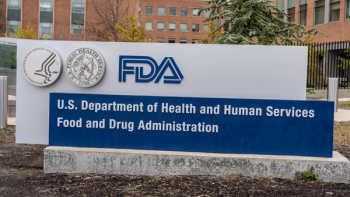
FDA Documents Recent Achievements, Maps Plans for Continued Progress
Despite critical disruptions and added challenges posed by the coronavirus pandemic this past year, FDA annual reports on drug regulatory programs and policies confirm successful efforts for meeting review time frames and updating policies and programs.
Despite critical disruptions and added challenges posed by the coronavirus pandemic this past year, FDA annual reports on drug regulatory programs and policies confirm successful efforts for meeting review time frames and updating policies and programs. These reviews of FDA initiatives and activities recapitulate efforts to assess and approve new drugs, generic drugs, and biologics and strategies for advancing new initiatives, which appear timely as FDA continues to renegotiate revisions and expansion of user fees paid by manufacturers to support FDA oversight and review activities.
Several reports from the Center for Drug Evaluation and Research (CDER) summarize efforts to ensure drug quality and to maintain a steady pace in new drug review and approvals despite limitations and pressures imposed by the pandemic. A report on new drug approvals in 2020 documents the 53 novel drugs and biotech therapies approved in 2020, describing a range of innovative oversight strategies to evaluate product safety and efficacy.1 The report also notes approval of additional uses for certain existing therapies, evaluation of new biosimilars, and the importance of expedited review programs in facilitating patient access to critical medicines.
More specific demographic information on the clinical trials supporting the review and approval of these novel drugs is provided in the 2020 Drug Trials Snapshots Summary Report.2 That report presents data on demographic groups participating in these key studies and how such enrollment may inform product safety and efficacy. In addition, CDER activities for protecting public health during the pandemic are outlined in an annual Drug Safety annual report that describes efforts to ensure appropriate tracking and reporting of safety issues, some related to broader uses of the agency’s Sentinel System.3
Separately, an annual report from CDER’s Office of Product Quality (OPQ) highlights the use of alternative tools for on-site facility inspections to support the timely approval of new drugs, an effort that avoided the need for 153 site visits.4 OPQ notes its role in advancing CDER’s emerging technology program and efforts to advance continuous and semi-continuous manufacturing and continued development of its knowledge-aided assessment and structured applications (KASA) program for evaluating new drugs, starting with solid oral dosage forms. Another main goal is to move forward with a new framework for assessing and identifying mature quality management systems by manufacturers.
OPQ also cites its efforts to support the approval of 942 generic drugs last year, including more first generics, complex generic therapies, and biosimilars. This involves coordination with CDER’s Office of Generic Drugs (OGD) in bringing new generics to market quickly and efficiently, especially to offset shortages in medicines critical to treating patients infected by COVID-19, as is outlined in the OGD annual report.5 It discusses efforts to update the OrangeBook, publish guidances on specific product development standards, advance the science on complex generics, and collaborate with foreign regulatory authorities to support wider global access to generic drugs. OGD is poised for a major reorganization beginning this year, which aims to update operations to better handle a steady rise in abbreviated new drug applications (ANDAs).
Advancing oncology and biologics
The challenges in continuing to speed new oncology therapies to patients are presented in an annual report from FDA’s Oncology Center for Excellence (OCE), which enumerates its achievements last year in overseeing the approval of multiple new indications and market approval of cancer treatments, including several new formulations.6 OCE director Richard Pazdur emphasizes the importance of addressing the needs of cancer patients during the pandemic with initiatives to permit more flexible clinical trials and remote communications. OCE also is continuing its Project Orbis collaborative review of new cancer therapies with other regulatory authorities to speed access to cancer treatments around the world.
Similarly, the annual report from the Center for Biologics Evaluation and Research (CBER) outlines how it met milestones for reviewing new therapies and for ensuring product safety.7 CBER director Peter Marks highlights the Center’s involvement in the development and evaluation of vaccines against COVID-19. In addition, CBER approved several novel biologics and blood reagents, provided advice to sponsors through virtual meetings, and continued to support pilot programs to advance modern manufacturing and regenerative medicine. Separately, Marks issued CBER’s list of new guidances slated for release in 2021.8 This relatively short list of only 14 planned advisories reflects the considerable progress made last year in issuing more than 20 guidances, including several related to development and emergency use of new COVID-19 vaccines and therapies.
In January, CDER also published a much longer list of planned guidances for 2021—more than a hundred, including 42 new items.9 The largest categories involve clinical studies, generic drugs and agency procedures, and new categories were added for biosimilars, compounding, pharmacology/toxicology and the animal rule. New guidances on the list involve the use of real-world data, developing antisense drug products, and demonstrating efficacy in a single trial.
FDA may gain some added resources for its evaluation of new treatments to combat COVID-19 from a Congressional proposal to make an extra $500 million available to the agency this year, on top of its budget for 2021 headed for final approval on Capitol Hill. The funding boostrecognizes the considerable added work that FDA has taken on to support the development and oversight of new vaccines, therapeutics and medical products, as multiple applications for EUAs and product approvals have overloaded the agency.
Notes
1.
7.
Newsletter
Lead with insight with the Pharmaceutical Executive newsletter, featuring strategic analysis, leadership trends, and market intelligence for biopharma decision-makers.




